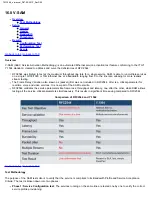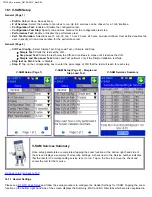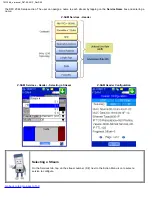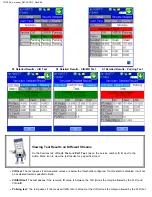
Overview of timing - PTP Messages
1. The master starts the exchange by sending a Sync message to the slave. The message contains the time t1 at which
the packet was sent. The slave notes the time t2 at which this message was received. Depending on the master
hardware capabilities, the sending time may not be accurate enough in the original Sync message; therefore it can be
optionally followed by a Follow up message containing the accurate send time t1 of the Sync message. A clock
supporting Sync and Follow up messages is referred to as a two-step clock, whereas a clock supporting only Sync
messages is referred to as a one-step clock.
2. The Slave sends a Delay Request message to the master and notes the send time t3. Upon reception of the Delay
Request the master notes the time t4 and embeds this information in the Delay Response message.
3. The slave is now armed with 4 timestamps. The network delay between master and slave is estimated by averaging
the time between master and slave (t2-t1) and the time between slave and master (t4-t3). It is important to note that
this calculation assumes that the network delays are symmetrical.
4. The timing offset between slave and master is then determined by subtracting the delay from the difference between t1
and t2.
5. With the Delay and Offset information, the slave is able to align its clock to the master.
6. Sync, optional Follow up, Delay_Req and Delay_Resp are exchanged repeatedly throughout the duration of the 1588v2
session to compensate for clock drift.
_e-manual_D07-00-051P_RevD00
Summary of Contents for VePal TX130M+
Page 1: ...TX130M _e manual_D07 00 051P_RevD00...
Page 19: ...Go back to top Go back to ToC TX130M _e manual_D07 00 051P_RevD00...
Page 69: ...Go back to top Go back to ToC TX130M _e manual_D07 00 051P_RevD00...
Page 105: ...Go back to top Go back to ToC TX130M _e manual_D07 00 051P_RevD00...
Page 171: ...Go back to top Go back to ToC TX130M _e manual_D07 00 051P_RevD00...






























